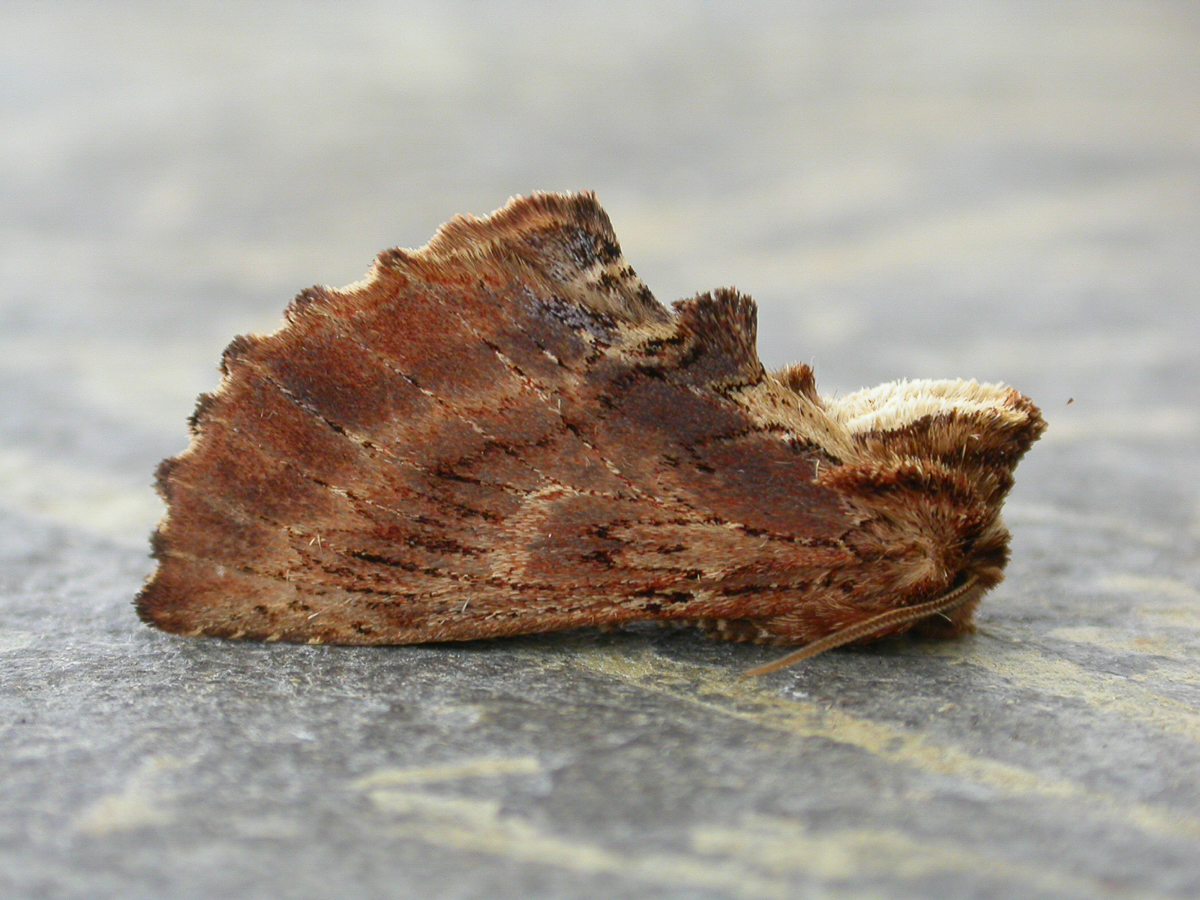
Photo © Andy Mitchell
The coxcomb prominent (Ptilodon capucina) is a moth of the family Notodontidae. It is a common species throughout the Palearctic realm from Ireland to Japan. It was first described by Carl Linnaeus in his 1758 10th edition of Systema Naturae.
This species has brown forewings, varying considerably in tone, with indistinct darker markings. The hindwings are buffish with a black spot at the tornus. At rest, the species has a very distinctive profile with tufts of hairs protruding upwards from the thorax and the hind edge of the forewings (this latter feature shared with other prominents). The margins of the forewings are also wavy. This rather "lumpy" appearance has led to the rather fanciful comparison to the comb on a cock's head. Two broods are produced each year with adults on the wing in May and June and again in August and September. This moth flies at night and is attracted to light.
The larva is green or brown with a yellow stripe down each side and two red humps at the rear end. It is polyphagous and feeds on a wide variety of deciduous trees and shrubs (see list below). The species overwinters as a pupa.
For detail see Robinson et al., 2010.
Source: Wikipedia
The primary larval foodplants are Alder (Alnus glutinosa), Aspen (Populus tremula), Beech (Fagus sylvatica), birches (Betula spp.), Field Maple (Acer campestre), Hawthorn (Crataegus monogyna), Hazel (Corylus avellana), Hornbeam (Carpinus betulus), limes (Tilia spp.), oaks (Quercus spp.), poplars (Populus spp.), roses (Rosa spp.), Rowan (Sorbus aucuparia), Sweet Chestnut (Castanea sativa), Sycamore (Acer pseudoplatanus) and willows (Salix spp.).